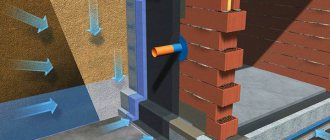In the suburban real estate market, the sales leaders over the past few years have undoubtedly been land plots without a contract. People are actively buying them even when the village has not yet begun to be built. This can only mean one thing - a large wave of mass construction of private houses is coming.
Considering the average price of these plots and the principle of total savings for modern consumers on literally everything, it is unlikely that the development of such objects will take place with the participation of a well-known construction company, an architect, or at least a competent foreman.
What consequences could such construction lead to? Is the savings on building a house without a project justified? And is it possible to design a cottage yourself? Let's look at all the answers in this article.
Is it possible to start building a cottage without a project or according to your own design?
We often see an abundance of advertising in newspapers, the Internet and TV from developers, contractors, architects, builders, and material manufacturers. Everyone praises their service and product, they are afraid that their competitors have everything bad, of poor quality, but they have the best, and in general - there is no way to build a house without them...
And if you start an argument with them, you may hear different things: for example, that building a house without a design, without their professional competencies, is risky and illegal. Is it really?
In fact, the construction and design of private houses with a height of no more than 3 floors and for single-family residence is practically not regulated by the legislation of the Russian Federation. Yes, there are certain construction standards, SNiPs, GOSTs, by-laws and clarifications, but if you do not violate them, then there will be no problems.
This means that any private developer can literally draw a sketch of his future home by hand and receive a building permit.
Do you need a construction project?
It is worth recalling that having received a developer’s passport (scheme of the master plan for the development of the site), you can begin building a house. But a dilemma arises: does it make sense to spend time and money on developing a construction project or is it better to start construction work without it, because many friends have already built a house “by eye” and were satisfied.
To avoid mistakes, let’s analyze the positive and negative aspects of building a house without a project.
Is it possible to obtain a building permit in the absence of design documentation?
According to Article 49 of the Town Planning Code of the Russian Federation, a project declaration is not needed for the following capital construction projects:
- Detached residential buildings with no more than 3 floors , intended for one family (individual housing construction projects);
- Residential buildings with no more than 3 floors, consisting of several blocks , the number of which does not exceed 10 and each of which is intended for one family, has a common wall (common walls) without openings with the neighboring block or neighboring blocks, is located on a separate plot of land and has access to public territory (blocked residential buildings);
- Apartment buildings with no more than 3 floors , consisting of one or more block sections, the number of which does not exceed 4, each of which contains several apartments and common areas and each of which has a separate entrance with access to the common area .
Thus, we see that even if there is no project for a private house, there will be no problems with obtaining a construction permit. The only thing you need is to order from a design organization or department of a local architectural bureau a diagram of the planning organization of the land plot, and also indicate in the papers the expected dimensions and area of the future house.
What should we build a house - let's draw it, we'll live!
So, finally, the land is ours and we can build.
Where to begin?
The Internet is replete with offers of seemingly modern, beautiful houses, but which house to choose?
First of all, when choosing what a house should be like, you should use the principle of reasonable sufficiency.
After all, the cost of a house is not only and not so much construction, but the further operation (ownership) of the house. Agree, why do we need a house, the heating of which will take the lion's share of the family budget!
My friends built a house on 600 m2 and now they lack $1,500 for heating, as a result their house is constantly cold and damp.
Equally important is the correct assessment of the area of the future home.
Will the house be too cramped? Too big? Who will do the cleaning?
Practice shows that it is simply impossible to maintain order in a house larger than 300 m2 on your own.
Usually, when calculating the required area of a house, the following indicators are taken: 10-12 m2 for each family member, plus the area of “common” premises - living room from 20 m2, kitchen (from 12 m2), storage rooms, special and utility rooms. Take into account the corridors, the area of which can be about 10% of the area of the house.
As a result, the minimum area of a house for a comfortable stay for a family of four will be about 120 m2.
A smaller house will be cramped.
Communications are also important: heat, electricity, water, sewerage.
The comfort and coziness of your future home depends on proper communication planning. Modern technologies, such as a solar power plant and recuperation, will significantly reduce utility costs, and a competent communications plan will reduce the cost of building utility networks for a private home.
What about the exterior of the house?
House designs on the Internet offer a lot of options! It is worth noting here that good planning, zoning of the house and competent engineering communications are much more priority when choosing than a beautiful appearance. There are a lot of finishing materials; you can “paint” and decorate a good house in any way you like, and you shouldn’t choose a house based on its appearance.
Still, you live inside, not outside.
Choosing a home is not an easy process, and building a good home is even more difficult.
You can't do this without a plan.
Is it possible to put a house into operation in the absence of design documentation?
According to the Civil Code of the Russian Federation, Article 55 (“Issue of permission to commission”), the following documents are required for this:
- title documents for the land plot;
- urban planning plan of the land plot submitted to obtain a building permit;
- building permit;
- act of acceptance of a capital construction project;
- an act confirming the compliance of the parameters of the constructed capital construction facility with the design documentation , including the requirements for energy efficiency and the requirements for equipping the capital construction facility with metering devices for the energy resources used, and signed by the person carrying out the construction;
- documents confirming the compliance of the constructed capital construction facility with technical conditions and signed by representatives of organizations operating engineering support networks (if any);
- a diagram showing the location of the constructed capital construction facility, the location of engineering and technical support networks within the boundaries of the land plot and the planning organization of the land plot and signed by the person carrying out the construction;
- conclusion of the state construction supervision body on the compliance of the constructed capital construction facility with the requirements of design documentation , including the requirements of energy efficiency and the requirements for equipping the capital construction facility with metering devices for the energy resources used;
- technical plan of a capital construction project, prepared in accordance with Federal Law of July 13, 2015 N 218-FZ “On State Registration of Real Estate”.
So, there is no way to do without project documentation and all the papers described above - such a house will not be decorated. Even worse, they may recognize it as “self-construction,” which is fraught with trial and subsequent demolition. This is why it is necessary and important to have a properly designed project.
What does the project provide? A few words about the advantages.
1. Correct calculation of strength.
The first and most important thing that the project provides is the ability to correctly calculate all the loads that your house and its foundation will subsequently bear. This will give you confidence that in a couple of years your house will not “float”, the foundation will not crack, and the walls will not “come apart” and you will not have to carry out an EXPENSIVE reconstruction of the house.
Having spent money on creating a project, approximately 20,000 rubles, you save on something more expensive - reconstruction (from about 100,000 rubles).
2. Possibility to preliminarily estimate the cost of construction.
The project contains a list of all materials needed for construction, indicating the quantity. Based on this, it is possible to determine the cost of materials, as well as the planned volume of work and estimate the total cost of construction.
3. Reliability and thoughtfulness of the house design.
All house structures are designed based on calculations. By building a house according to a well-made project, you will be confident in the strength of the structures, their safety and durability. You are guaranteed not to have cracks on the facade, problems with uneven settlement of the foundation and deflection of the floors. In addition, the project integrates engineering systems in a comprehensive manner, so during the construction process there are no problems with the lack of holes for water pipes in the right place, and other similar problems.
4. Savings during construction.
Without accurate calculations of the strength of structures, it is easy to make a mistake in the required thickness of the foundation, walls and ceilings. If they are made “stronger just in case,” this will lead to an increase in material and, accordingly, the cost of construction. An error on the smaller side can lead to insufficient structural strength and problems that may not be solved at a reasonable price.
5. Possibilities for subsequent redevelopment.
After some time, there may be a need for redevelopment or major repairs. Having a blueprint will help determine which design changes can be made and which cannot. The project will help you quickly find hidden communications and understand them. You won't have to dig trenches along your foundation to find water pipes or gouge through walls to find electrical wiring.
6. Facilitates the construction process.
Based on the project, an agreement is concluded with construction organizations. In this case, the final price and construction time are immediately determined. No serious construction organization will enter into a contract with you based on drawings made in some program or drawn by hand.
The presence of a project insures you as a developer against unreasonable increases in cost and construction time. If you have a project, both you and the builders will know exactly what should happen in the end, and will avoid conflict situations that inevitably arise in the absence of a clear project.
Independent creation of a future home project
It is certainly possible to draw up and calculate a construction project on your own if we are talking about simple structures. For example, a small typical country house, which does not need any communications except power supply. It will be possible to live in such a building during the summer season.
Important! The main advantage of projects downloaded from the Internet or drawn by yourself is that you don’t pay anything for them. However, there are many more negative sides. In construction, many things can only be correctly calculated by a professional with a higher construction education: for example, loads on the foundation and floors, structural stability, calculation of the volume of materials and their competent selection.
As a result, having developed a project with your own hands, you can get something completely different from what was planned or, even worse, a low-quality house that will not last long. Therefore, if you have a desire to build:
- permanent house (with foundation);
- durable (for tens or more years);
- for permanent residence (including in winter);
- with “heavy” walls (made of brick, concrete, etc.);
- with communications installed inside (plumbing, heating, electricity, sewerage).
In this case, it is better to entrust the task to professionals and contact a company for turnkey construction. As a last resort, if the budget does not allow, you can consider purchasing a standard project or order an individual one, but from a professional architect who will make all the calculations in accordance with the rules and regulations.
How I build a house: mistakes of builders, quests with documents and light at the end of the road
I've had a tab open with this article for several days. I still want to speak out, but I can’t get my thoughts together, because, thinking about my construction process, in which, naturally, there are many points of intersection with the author’s story, I feel exclusively despondency and melancholy)
I understand all this pain and suffering very well! My situation is somewhat simpler: my colleagues and I built townhouses through collective efforts. And, if at the stage of erecting the box it was somehow still possible to distance oneself from pressing problems due to the presence of a more or less competent foreman (as it seemed then) and the entire construction process consisted only of timely payment for work, then when it came to internal work, it was necessary plunge into it all headlong. Rough and final repairs, landscaping, communications - all this is very difficult to get into if you don’t have acquaintances, connections, relatives who are builders. It was painful from any kind of interaction with this wonderful world of construction: - from the choice of a contractor (“Mikhalych and I will start working tomorrow, we will come after 19-00, otherwise we have work earlier, and sometimes on weekends”) - from the realization that there is no direct connection between the money spent and the quality of the work performed: you either exercise complete control over all processes, constantly call, clarify, stop believing that “well, I seemed to have expressed myself clearly, why would I repeat this?” , you draw explanatory pictures, study the difference in materials, rush around and choose these same materials, and then in the end you also overpay for the “complexity” of the work, or you get a bunch of problems with redoing what they did for you (but at the same time you understand this only after a while, somewhere at the next stage of repair). - from a lack of understanding of how builders can independently make decisions that require coordination with the customer, without conversation (“well, we saw that there was a cable lying here, but no one said that it needed to be laid in a cable channel, so we covered everything with soil and planted a lawn,” “well, no one said at what distance the curb stone should be placed, we figured it out ourselves,” “well, no one said that this shaft was made specifically for laying pipes for water and heating, so we started digging plate"). This is incredibly bombing. Plus, it’s also difficult to communicate with the performers, because for some reason they hate you by default and consider you the very last person whose advice you should ask. Of course, all people are different, there were also wonderful comrades with whom it was pleasant even just to talk, but there is not a single story in which the employee behaved adequately from beginning to end. - from the fact that for some reason each new employee immediately begins to “save money” on any little things that would not be worth saving on (and in fact, such savings result in 2% of the total cost of work and materials). And then you stand and think: at what point did this person think that this boiler piping, which looks 40 years old, would look organic in this house? (which also leaked in three places at the stage of starting the heating system). - from the fact that any announced deadlines are for reference only. The classic scheme: today - “no, today it’s not working, I’ll start next week”, tomorrow - “well, I’ve arrived, where are you?”
At some point I simply stopped enjoying the whole process. It turns out to be some kind of vicious circle: in order not to fall for amateurs and soberly control the whole process, you must understand this yourself; but if you understand this yourself, then why would you hire someone? In short, as one friend jokes, who has now been planning to lay tiles at my house “next week” for six months now, “you build the first house for sale, the second house for yourself.” 
Purchasing and ordering a project from a design organization
For the customer, the advantages of this solution are as follows:
- the opportunity to see clearly (in 3D) what your future cottage or country house will look like, evaluate its functionality and comfort;
- there is an opportunity to make your own adjustments before construction begins;
- the building will comply with all legal requirements and standards;
- it is possible to determine in advance how much material will be used for a given house, how much it will cost and whether the customer will be able to meet the budget;
- the customer will receive exactly the object he dreamed of.
Recommendation: If you don’t have enough money for an individual designer, buy a standard project from a construction company. It will cost you much less.
Interior designer
An interior designer works with the general concept of the interior: layout, building design, furniture arrangement, layout. His main professional skills and knowledge are knowledge of design rules, the basics of design and ergonomics, methods of zoning space, modern finishing materials and technologies, and the legislative framework for planning in his region. He also understands color combinations, lighting rules, design styles and architecture.
Photo: Vidette
The work of a designer is complex and general. He can create an image of the interior, create mood boards/collages (mood boards). In Russia it often happens that a designer is also a design engineer, decorator and assembler. But in large firms and bureaus these specialties are already separated.
An interior designer usually uses programs such as ArchiCAD or Revit with BIM design. There is also Autodesk, Broderbund 3D, Data Becker 3D, Cadsoft Envisioneer, Bentley.
For easy modeling at the initial stage, SketchUp or Rhino are suitable, for 2D AutoCAD or the 2D ArchiCAD module. For presentations - Photoshop, Illustrator and InDesign.
Photo: AdobeStock
Mobile apps include Paper By 53 and Morpholio Trace for sketching, and myPANTONE for creating scales. Must-have - AutoCad 360 and Autodesk Formit and BIMX for ArchiCad, which allows you to open files from the main programs on your mobile phone.
Stages of designing a private house
Let's take a step-by-step look at the main stages of drafting a project.
Analysis of functionality, placement and use of space
- what rooms need to be equipped and how they will be located relative to each other so that all family members feel comfortable in them;
- the number of bathrooms is determined;
- a decision is made on how many storage rooms, vestibules, non-residential premises and auxiliary rooms there will be;
- the optimal ceiling height is selected;
- the type of heating and the location of communications are selected.
My allowance
The salary is very ambiguous, depending both on the region and on the status of the organization itself. On average in the regions the amount is around 35,000 rubles per month, in the capital it is higher, but the requirements are also relative. In government organizations the level is lower, but there is a full social package, regulations on work and rest time. In a private organization, you have to work piecework and with an irregular work schedule.
My salary depends on the volume of work of the workshop and the working group.
There is no salary as such, vacation and weekends too. For 1 m3 of log house, which went from design to assembly, I will receive 0.3%, which is about 270 rubles. Or about 33,000 rubles for a house with a volume of 250 m3, which in the volume of a log house is equal to about 120 m3 of lumber, for a period of about 3 months.
On average, I have about 55,000 rubles a month, taking into account the current financial situation in our country and the decline in the volume of work over the past 3 years.
Registration according to the Labor Code, where the salary costs 25,000, and a pension comes from it. There are no other social guarantees.
What does the design documentation look like and what does it include?
Let's consider what should be included in a house project if you ordered it from a design organization.
Architectural section
Here a description of all the parameters and data of the future house is compiled, with detailed cross-sectional drawings of each floor, facade, and roof. All information about lintels, door and window openings and ventilation ducts.
Structural section
Coordination of the plan from the first section with the drawing of the foundation, floors, rafter system, and the construction of the basement, if one is planned. All wiring and components and features of the rafter system arrangement are indicated.
Engineering section
Here, drawings are made and all engineering systems are described (water supply, gas pipelines, electrical wiring are designed). As well as methods for introducing them into the building.
If it is planned to install heating from main gas, then a separate project is ordered and approved accordingly in Mosgaz (or the corresponding service in your region). Low-current systems (security, television, Internet communications) also require separate design.
picker
The assembler connects the designer’s ideas with actual positions in catalogs of furniture, decoration, and decor brands. He draws up an estimate, which will be accurate and not approximate, contacts suppliers, organizes delivery, and conducts research on the furniture market. Most of the time, an order picker works with tables and lists, catalogs and brochures, and online stores.
Photo: Shutterstock
Pros and cons of custom design
Positive aspects of individual design in private construction:
- Saving time . There is no need to redo and adjust inconsistencies in the documentation. Construction will proceed systematically, without any incidents;
- Cost savings . If the type of foundation and the weight of the structure are chosen incorrectly, then everything will have to be redone, and this will increase the cost of construction by at least 50%;
- Safety . Every detail is taken into account during the design process, so the cottage turns out durable and reliable.
As for the cons:
- Production time . If the owner of the site orders a complex project for a two- or three-story cottage, then specialists can work with it for several months, since they will have to do a lot of calculations and research;
- High price . Perhaps the most significant negative point. Depending on the complexity, the cost of an individual project can be 50 or 100 thousand rubles, and this is not the limit.
Where and how to order a cottage project
Architectural and design bureaus, construction companies, private architects and designers offer to order a house project. It all depends on your desires and needs. If the individual, sophisticated appearance of the cottage is important to you, then a construction company will not be the best option - you need to turn to architects or designers. You also need to pay attention to the cost of developing the plan, in particular whether the overall construction budget compares with the desired result.
A private house construction project is an important part of building a house. The plan determines whether the house will be strong, durable and comfortable specifically for you.
We have more than 15 house designs in our inventory. When ordering the construction of a house, the development of a preliminary design is completely free! For information, ordering such a project on the market costs from 45,000 rubles. And we will do it for you for free.
We can also develop for you a design project for a house, a project for a bathhouse complex, and even a landscape design.
Summary
Building a house without design documentation is a high risk. Firstly, difficulties may arise with the design of the building and commissioning. Secondly, mistakes and shortcomings made during the design and construction process can lead to the fact that the building will be built in violation of safety standards, and therefore pose a danger to residents.
Did you find this article helpful? Please share it on social networks: Don't forget to bookmark the Nedvio website. We talk about construction, renovation, and country real estate in an interesting, useful and understandable way.
Decorator
A decorator works with specific things: fabrics and curtains, textiles and carpets, paintings, sculptures and other objects of art. The decorator can make changes to the finishing: work with stucco molding, gilding, decorative details and panels, stained glass windows and deal with household furnishings of the interior (for example, textiles, dishes). The decorator, first of all, works with specific suppliers: catalogues, brochures and showrooms.
Photo: havenly
Features of the profession of a design engineer
the main advantages of my profession to be:
- the ability to design, create, invent, think creatively and turn it into a real building;
- the ability to perform the work of both an engineer and an architect;
- free schedule;
- the possibility of partially determining the volume of work for a month;
- the opportunity to gain experience communicating with successful people, because most clients have very large incomes, and you can get a lot of interesting information from them.
The profession is quite authoritative and necessary, in which there is no limit to perfection, and there is a direction in which to continue studying and training.
But again, working with a private contingent is as much a minus as a plus, because people are different, and not everyone can find a common language and explain that there is certain legislation, norms and standards that we are obliged to adhere to, for this reason the reason why refusals occur.











